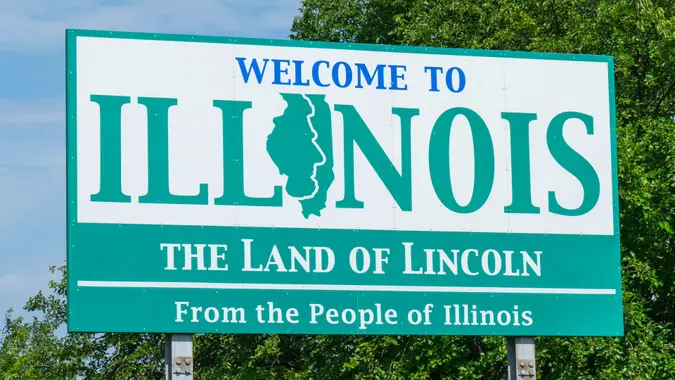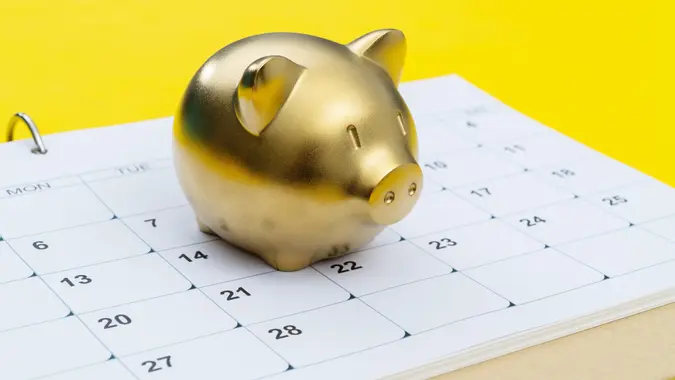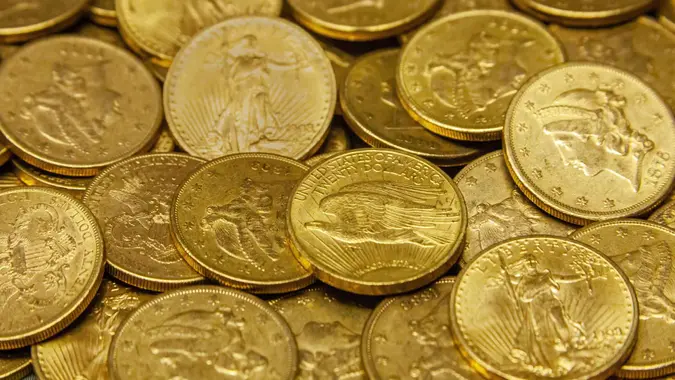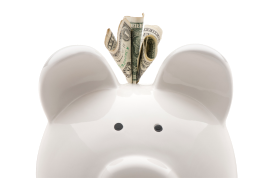What Is a Money Market Fund?

Commitment to Our Readers
GOBankingRates' editorial team is committed to bringing you unbiased reviews and information. We use data-driven methodologies to evaluate financial products and services - our reviews and ratings are not influenced by advertisers. You can read more about our editorial guidelines and our products and services review methodology.

20 Years
Helping You Live Richer

Reviewed
by Experts

Trusted by
Millions of Readers
One common financial instrument that causes some investors a great deal of confusion is a money market fund. Many think these financial instruments are the same as the similar-sounding money market accounts, which closely resemble savings accounts.
However, money market funds, sometimes called money market mutual funds, are open-ended mutual funds that invest in short-term securities. Investment professionals typically design them to preserve cash. While money market funds carry a modest amount of risk, they can produce higher returns while offering more safety and liquidity than other fixed-income investment vehicles.
These funds will not make you wealthy, but they can serve the needs of certain cash-focused investors.
What Is a Money Market Fund and How Does It Work?
Money market fund managers invest in short-term, low-risk debt securities usually characterized by low volatility. These funds seek to trade at a flat $1 per share net asset value, with income being distributed to investors in the form of a dividend.
Although money market funds typically pay lower interest rates than certain other fixed-income investment vehicles, the tradeoff is their safety and stability. Investors who need to save cash for emergencies — or simply want to store money while waiting for their next equity investments — often choose money market funds.
However, it’s important to note that unlike some other options, like savings accounts, money invested in a money market fund is not protected by FDIC insurance.
When funds fall below the $1-per-share benchmark, it’s called “breaking the buck.” This doesn’t happen often, but it did occur in September 2008 after Lehman Brothers declared bankruptcy. The crisis caused some money market funds to fall to 97 cents per share. When that occurred, the government stepped in and insured all stable-value funds.
Despite this rescue, money market mutual funds do not typically benefit from insurance guarantees or government intervention.
So, what is the point of a money market fund? They are a relatively safe way to invest and are generally more stable and accessible than other investment options.
Types of Money Market Mutual Funds
What is an example of a money market fund? Varied financial instruments can make up a money market mutual fund. The most common are as follows:
Retail
Retail funds limit ownership to individual investors.
Institutional
As the name implies, institutional money market funds serve institutions rather than individuals. Unlike most money markets, the NAV here can float based on market conditions. Companies and pension funds often purchase this type of mutual fund.
Government
Government money market funds invest a minimum of 99.5% of their funds in government securities. This usually means U.S. Treasuries, but could also mean government-sponsored enterprises such as Fannie Mae and Freddie Mac.
Both retail and institutional investors can buy this type of money market fund.
Prime
Prime funds, sometimes called “general purpose” funds, invest in short-term bank and corporate debt.
Municipal
Municipal money markets invest their assets in tax-exempt bonds issued by municipalities. These funds receive exemptions from federal income tax and, in some cases, exemptions from state personal income tax.
Here’s a look at the different types of money market mutual funds:
| Fund Type | Primary Types of Instruments Held |
|---|---|
| Retail Funds | Designed for individual investors; works to maintain the $1-per-share NAV |
| Institutional Funds | Serves institutions such as companies and pension funds; can have a floating NAV |
| Treasury | At least 99.5% invested in cash and U.S. Treasuries, with at least 80% invested in Treasuries |
| Treasury Only | At least 99.5% invested in cash, U.S. Treasuries and/or repurchase agreements, with at least 80% invested in Treasuries and repurchase agreements |
| Government | At least 99.5% invested in cash, U.S. Treasuries and/or repurchase agreements, with at least 80% invested in Treasuries and repurchase agreements; this can also include government-sponsored enterprises such as Fannie Mae and Freddie Mac, but the U.S. Treasury neither issues nor guarantees those securities |
| Prime (General Purpose) Funds | Assets invested in any approved, U.S.-dollar denominated money market instruments as defined by the SEC; this includes commercial paper, certificates of deposit, corporate notes, private instruments from either foreign or domestic issuers, and reverse repurchase agreements |
| National Municipal | Invests at least 80% of fund’s assets in municipal securities where interest is exempt from federal income tax |
| State Municipal | Invests at least 80% of fund’s assets in municipal securities where interest is exempt from federal income tax and personal state income taxes |
Who Might Consider Investing in a Money Market Fund?
Most individuals and institutions who turn to money market funds have one thing in mind: preservation of capital. But in most cases, account holders can have immediate access to their funds.
Moreover, money markets usually offer higher interest rates than standard savings accounts. And while money market funds don’t benefit from FDIC insurance, they have a high degree of safety, as they invest in high-quality, ultra short-term securities.
Considerations When Investing in a Money Market Fund
Even though money market funds offer certain benefits you can’t get with other financial instruments, these funds don’t necessarily suit all fixed-income investors. For this reason, individuals and institutions should consider the following:
Expense Ratios
Expense ratios are the annual costs of owning a fund, and they are deducted from the income the fund generates. Especially in a money market fund, in which capital appreciation is not an option, a low expense ratio is critical.
Exposure
Even the safest funds must deal with exposure and risk. Although money market funds are generally able to maintain a stable NAV of $1, some funds may own assets that are riskier than others.
Interest Rates
One concern in recent years is negative interest rates. Funds need positive rates to generate the cash needed to cover their fees and payout returns to money market fund investors. However, with the Fed embarking on an a cycle of aggressive interest rate increases, this is now less of an issue — but still something to keep in mind.
Money Market Funds vs. Money Market Accounts
While a money market fund is a mutual fund, a money market account functions as a bank account.
Similar to savings accounts, money market accounts generally limit withdrawals to six per month — although this has been temporary suspended due to COVID-19 — and they carry FDIC protection. In this way, they function more like savings accounts than investment funds.
How To Buy Money Market Funds
Purchasing a money market fund is similar to buying a stock. You can simply log on to your brokerage account and buy the fund of your choice.
If you do want help choosing the right money market fund, some online brokerages offer advice for a fee. Otherwise, you can find a fiduciary financial advisor.
Are Money Market Funds Right For You?
Is a money market fund a good investment? Money market funds work best for those who need instant access to a large amount of cash. These funds will not make you rich, but they will give you a relatively safe place to store funds and earn a modest return, often above that offered by a savings account.
John Csiszar contributed to the reporting for this article.
Our in-house research team and on-site financial experts work together to create content that’s accurate, impartial, and up to date. We fact-check every single statistic, quote and fact using trusted primary resources to make sure the information we provide is correct. You can learn more about GOBankingRates’ processes and standards in our editorial policy.
- Consumer Financial Protection Bureau. "Is a money market account insured?"
- Forbes Advisor. 2022. "Best Money Market Mutual Funds Of 2022."
- U.S. Securities and Exchange Commission. "Money Market Funds."
 Written by
Written by  Edited by
Edited by 

























